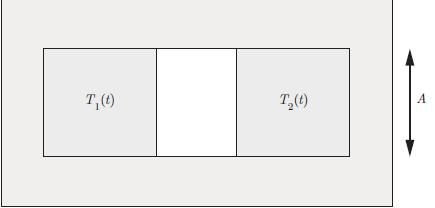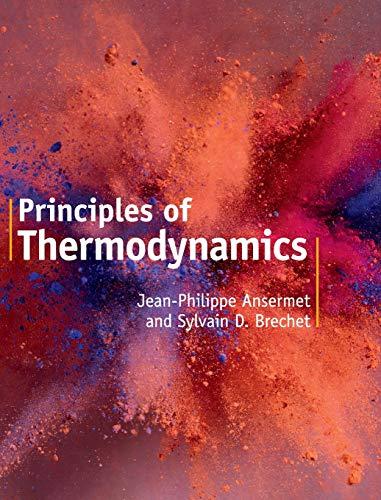An isolated system of volume V0 consists of two subsystems, labelled 1 and 2, separated by an
Question:
An isolated system of volume V0 consists of two subsystems, labelled 1 and 2, separated by an impermeable and moving diathermal wall of mass M and of negligible volume. Both subsystems contain a gas. The presure p, the volume V, the number of moles N and the temperature T of the gas are related by the equation pV = NR T where R is a positive constant (see § 5.6). The internal energy of this gas is given by U = cNRT where c is a dimensionless coefficient (see § 5.7). Initially, both subsystems are at the temperature Ti. Subsystem 1 is in a state characterised by a volume V1i and a pressure p1i. Likewise, subsystem 2 is characterised by a pressure p2i and a volume V2i. Determine,a) The number of moles N1 and N2 in subsystems 1 and 2.b) The final temperature Tf when the system has reached equilibrium.c) The final volumes V1f and V2f of the subsystems when the system has reached equilibrium.d) The final pressure pf when the system has reached equilibrium.e) Determine the entropy variation between the initial state and the final equilibrium state and show that, for the particular case where N1 = N2 = N, the result implies an increase in entropy.f) As in § 3.3, assume that the wall is able to transfer heat fast enough that the temperature T stays the same on both sides of the wall, which means that the heat transfer is reversible. Take into account the kinetic energy of the wall, neglect any heat stored inside the wall. Show that the wall comes to its equilibrium position with a velocity v that decays exponentially with a time constant τ inversely proportional to the thermo-hydraulic resistance Rth.
Two blocks of the same material face each other, separated by air. Thermal conduction through the air and convection are neglected. The blocks come to a thermal equilibrium due to heat exchange by radiation.
Step by Step Answer:

Principles Of Thermodynamics
ISBN: 9781108426091
1st Edition
Authors: Jean-Philippe Ansermet, Sylvain D. Brechet





